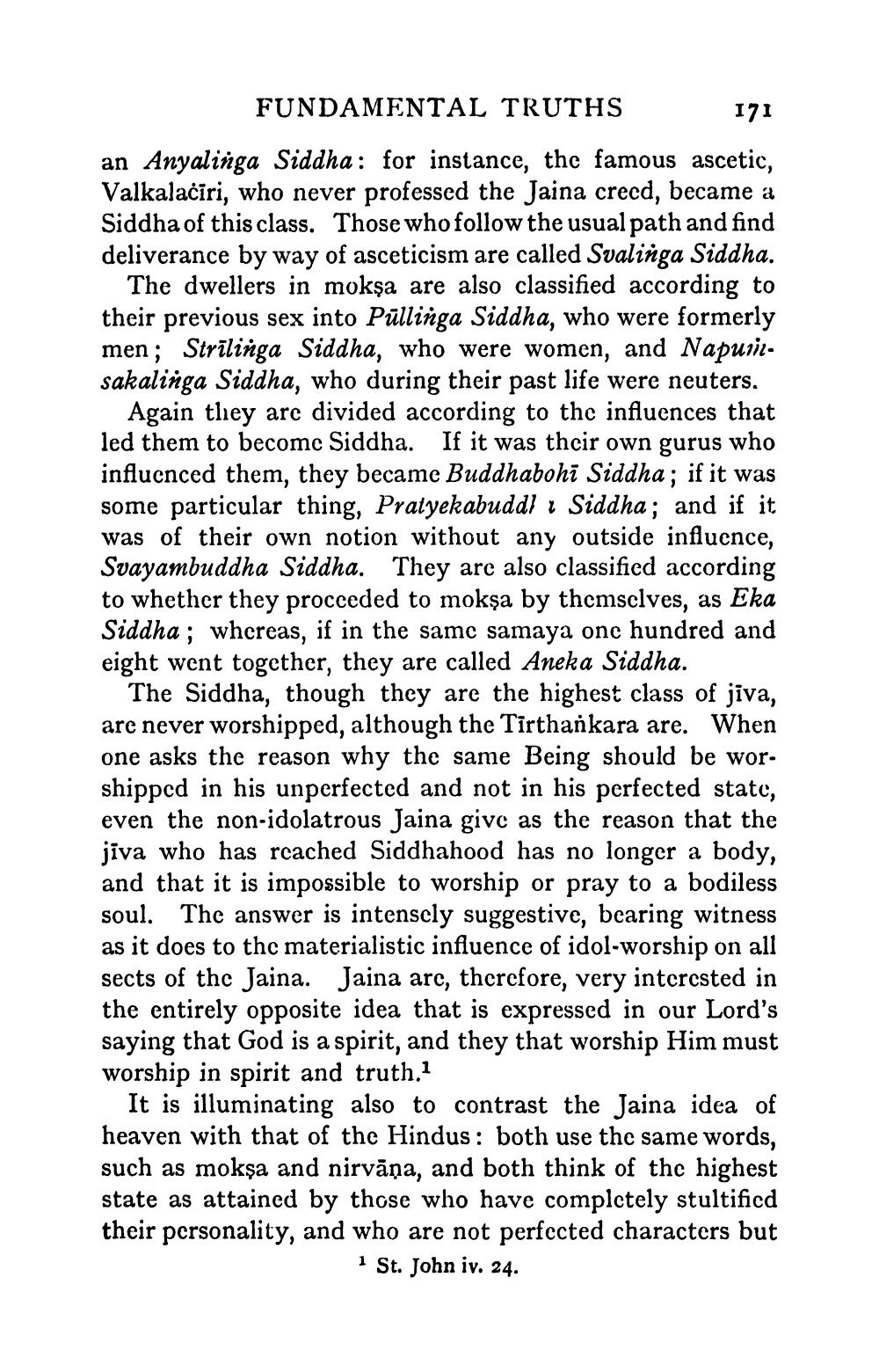________________
FUNDAMENTAL TRUTHS
171
an Anyalinga Siddha: for instance, the famous ascetic, Valkalaċīri, who never professed the Jaina crecd, became a Siddha of this class. Those who follow the usual path and find deliverance by way of asceticism are called Svalinga Siddha.
The dwellers in mokşa are also classified according to their previous sex into Pūllinga Siddha, who were formerly men; Strīlinga Siddha, who were women, and Napuirsakalinga Siddha, who during their past life were neuters.
Again they are divided according to the influences that led them to become Siddha. If it was their own gurus who influenced them, they became Buddhabohi Siddha; if it was some particular thing, Pratyekabuddi - Siddha; and if it was of their own notion without any outside influence, Svayambuddha Siddha. They are also classified according to whether they proceeded to mokşa by themselves, as Eka Siddha; whereas, if in the same samaya one hundred and eight went together, they are called Aneka Siddha.
The Siddha, though they are the highest class of jiva, are never worshipped, although the Tirthankara are. When one asks the reason why the same Being should be worshipped in his unperfected and not in his perfected state, even the non-idolatrous Jaina give as the reason that the jiva who has reached Siddhahood has no longer a body, and that it is impossible to worship or pray to a bodiless soul. The answer is intensely suggestive, bearing witness as it does to the materialistic influence of idol-worship on all sects of the Jaina. Jaina are, therefore, very interested in the entirely opposite idea that is expressed in our Lord's saying that God is a spirit, and they that worship Him must worship in spirit and truth.1
It is illuminating also to contrast the Jaina idea of heaven with that of the Hindus: both use the same words, such as mokşa and nirvāņa, and both think of the highest state as attained by those who have completely stultificd their personality, and who are not perfected characters but
1 St. John iv. 24.




